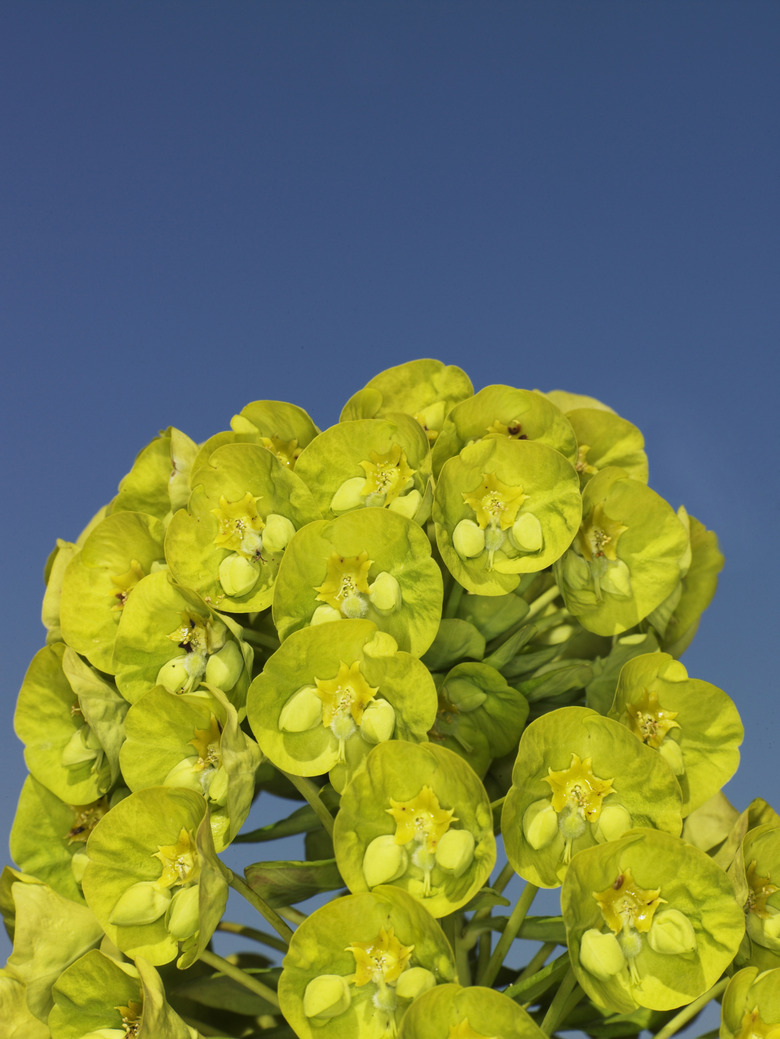How To Cut Back Euphorbia
Things Needed
- Pruning shears or loppers
- Mild liquid soap
- Soft cloth
- Rubbing alcohol
Euphorbia is a wide and varied botanical genus that contains over 2,000 species of herbaceous perennial plants and succulents. Also known as spurge plants, euphorbia grows successfully in subtropical, tropical and temperate climates with very little special care. Though euphorbia survives without regular pruning, light pruning throughout the growing season and a harsh end-of-season pruning results in a more manicured-looking landscape plant. Cutting back euphorbia also has the added benefit of making the next season's growth and blooming even more prolific.
Step 1
Wash the blades of your pruning tools in warm, soapy water before cutting back the euphorbia to avoid spreading bacteria or fungus from previously pruned diseased plants. Rinse the blades under cool running water and dry them with a soft cloth. Rub rubbing alcohol onto the blades to sterilize them.
Step 2
Examine the plant frequently during the growing season to identify problem foliage as soon as possible. Remove diseased, damaged or dead foliage from the euphorbia any time during the growing season to keep the plant healthy and attractive.
Step 3
Snip spent blossoms from the euphorbia after each blooming cycle to encourage the formation of another flush of flowers.
Step 4
Cut the euphorbia plant down to the ground in the fall to encourage more vigorous growth the following season. For best results, wait to cut back the plant until all of its shoots have completely yellowed.
Step 5
Make the pruning cuts at a 45-degree angle and cut through the euphorbia shoots as cleanly as possible.
Tip
Wash and sterilize the blades of your pruning tools after cutting back the euphorbia.
Warning
Many euphorbia species bleed a caustic, milky sap that irritates skin. Protect your hands with gardening gloves when cutting back your euphorbia.
References
- Deer in My Garden; Carolyn Singer
- The Gardener's Book of Colour; Andrew Lawson
- The Pruning Book; Lee Reich
- University of California Sonoma County Master Gardeners: Euphorbia
- The Telegraph: How to Grow Euphorbia x Martinii
